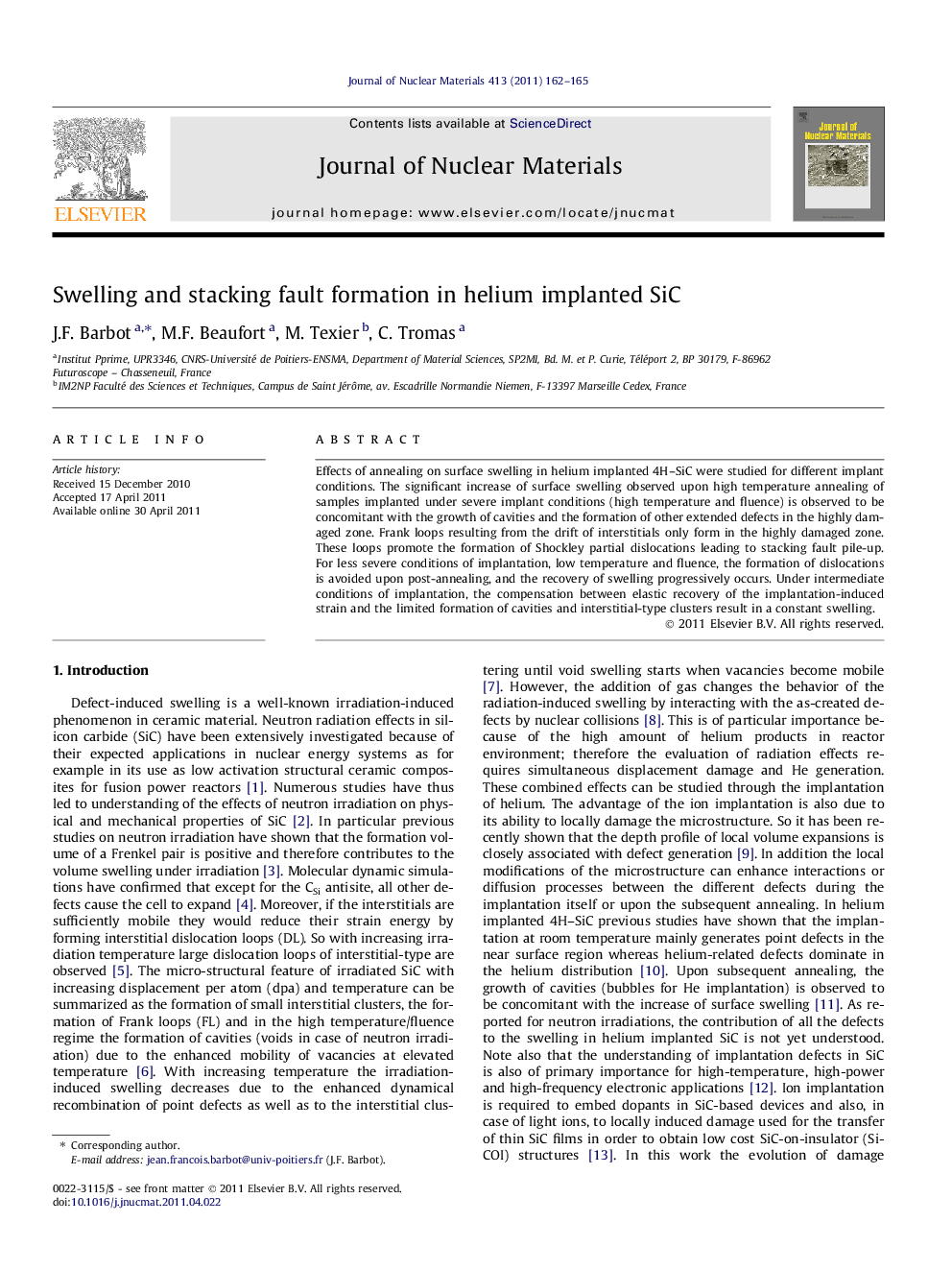| Article ID | Journal | Published Year | Pages | File Type |
|---|---|---|---|---|
| 1567041 | Journal of Nuclear Materials | 2011 | 4 Pages |
Abstract
Effects of annealing on surface swelling in helium implanted 4H-SiC were studied for different implant conditions. The significant increase of surface swelling observed upon high temperature annealing of samples implanted under severe implant conditions (high temperature and fluence) is observed to be concomitant with the growth of cavities and the formation of other extended defects in the highly damaged zone. Frank loops resulting from the drift of interstitials only form in the highly damaged zone. These loops promote the formation of Shockley partial dislocations leading to stacking fault pile-up. For less severe conditions of implantation, low temperature and fluence, the formation of dislocations is avoided upon post-annealing, and the recovery of swelling progressively occurs. Under intermediate conditions of implantation, the compensation between elastic recovery of the implantation-induced strain and the limited formation of cavities and interstitial-type clusters result in a constant swelling.
Related Topics
Physical Sciences and Engineering
Energy
Nuclear Energy and Engineering
Authors
J.F. Barbot, M.F. Beaufort, M. Texier, C. Tromas,
